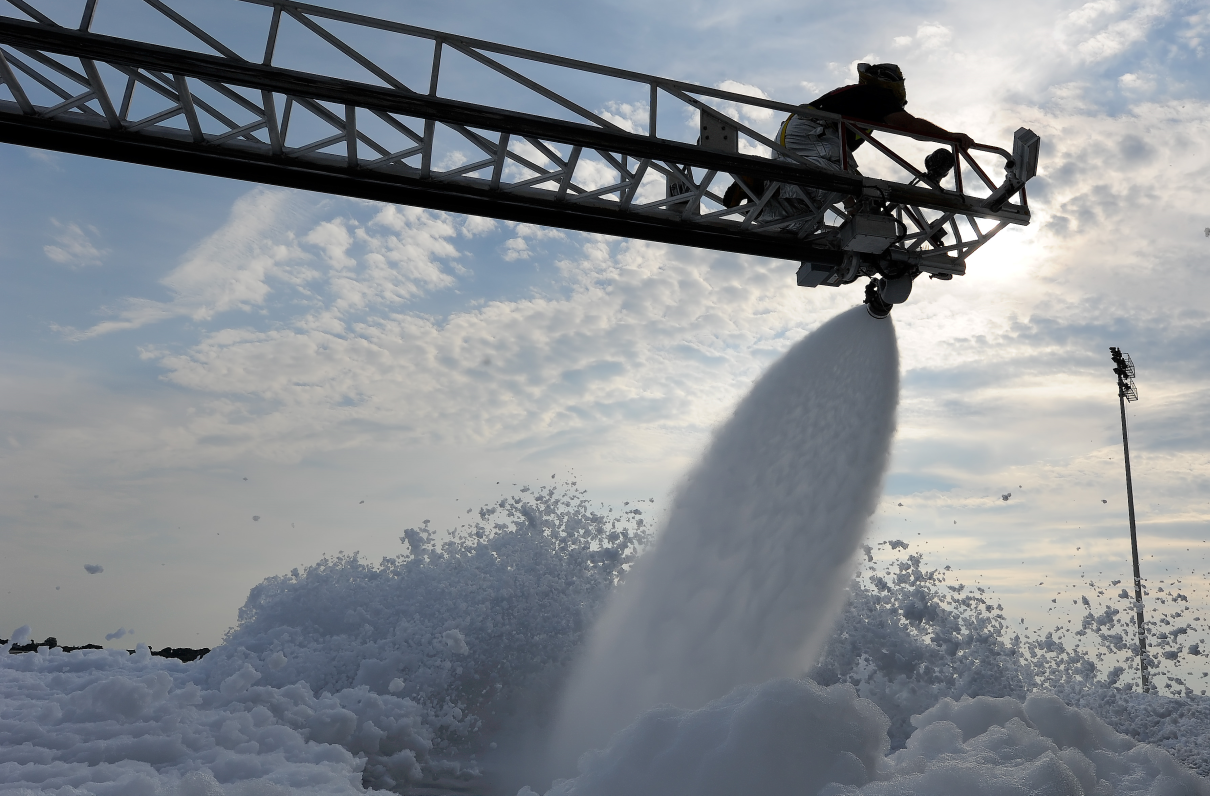This article by Richard Sisk originally appeared on Military.com, the premier resource for the military and veteran community.
The House version of the defense policy bill would require the Pentagon to share data on groundwater contamination on military bases with local communities.
The $733 billion National Defense Authorization legislation passed by the House last Friday included an amendment sponsored by Rep. Mike Turner, R-Ohio, requiring the Pentagon to share information on possible contamination from the chemical known as PFAS, widely used in firefighting foam at military bases.
Turner, whose district includes Wright-Patterson Air Force Base, said in a statement, "Our base, like many others around the nation, continues to deal with the detection of PFAS in our groundwater.
"Today's passage of my amendment will provide greater transparency to communities like mine to reduce PFAS in our water," he said of the per- and polyfluoroalkyl substances.
[RELATED: Widows Tax Repeal, 3.1% Pay Raise, and More Move Forward as House Passes Defense Bill]
Turner's amendment passed a day after the Environmental Working Group (EWG) advocacy organization issued a report stating that 58 more Air Forcebases had been found to have groundwater with traces of potentially cancer-causing PFAS, bringing the total of bases in all the services with detected PFAS contamination to 175.
A news release from EWG said the updated list was obtained from Air Force data; the group published an interactive map of known sites. The map was developed by EWG and the Social Science Environmental Health Research Institute at Northeastern University.
"Despite knowing the risks posed by PFAS in firefighting foam, the Pentagon continued to put military families at risk for decades," Melanie Benesh, EWG's legislative attorney, said in a statement. "Now, when it's time to clean up its PFAS pollution, the military is dragging its feet."
According to EWG, "Even the smallest doses of PFAS chemicals, used in firefighting foam and hundreds of consumer products, have been linked to serious health problems, including cancer and harm to the reproductive and immune systems."
"It's time for Congress to end new PFAS pollution and clean up legacy contamination," said Ken Cook, president of EWG.
The Defense Department has maintained that the military is no longer using firefighting foam that contains these chemicals for maintenance, testing or training -- only for actual fire emergencies.
In May, then-Acting Defense Secretary Patrick Shanahan testified that the water on military bases is safe to drink.
[RELATED: MOAA Launches TRICARE and Military Health Survey: Have Your Say Now]
"No one's drinking contaminated water" at the sites in question, he said at a hearing of the House Appropriations Defense Subcommittee.
He said the concerns raised by a September 2018 Government Accountability Office report on the firefighting foam, and the potential for runoff contaminating groundwater, are being addressed.
"We no longer train with them," he said of the fire retardants, and "we no longer test with them. The only use of them is in the event of a fire."
The GAO report last year said that the firefighting foam used at DoD installations could, at elevated levels, increase the risk of cancer or other health issues.
Other articles by Military.com:
You Can Live in This WWII-Era Navy Command Center for Just Under $10 Million
New Law Increases VA Home Loan Limits, Funding Fees
Apollo 11 Astronaut Returns to Launch Pad 50 Years Later



